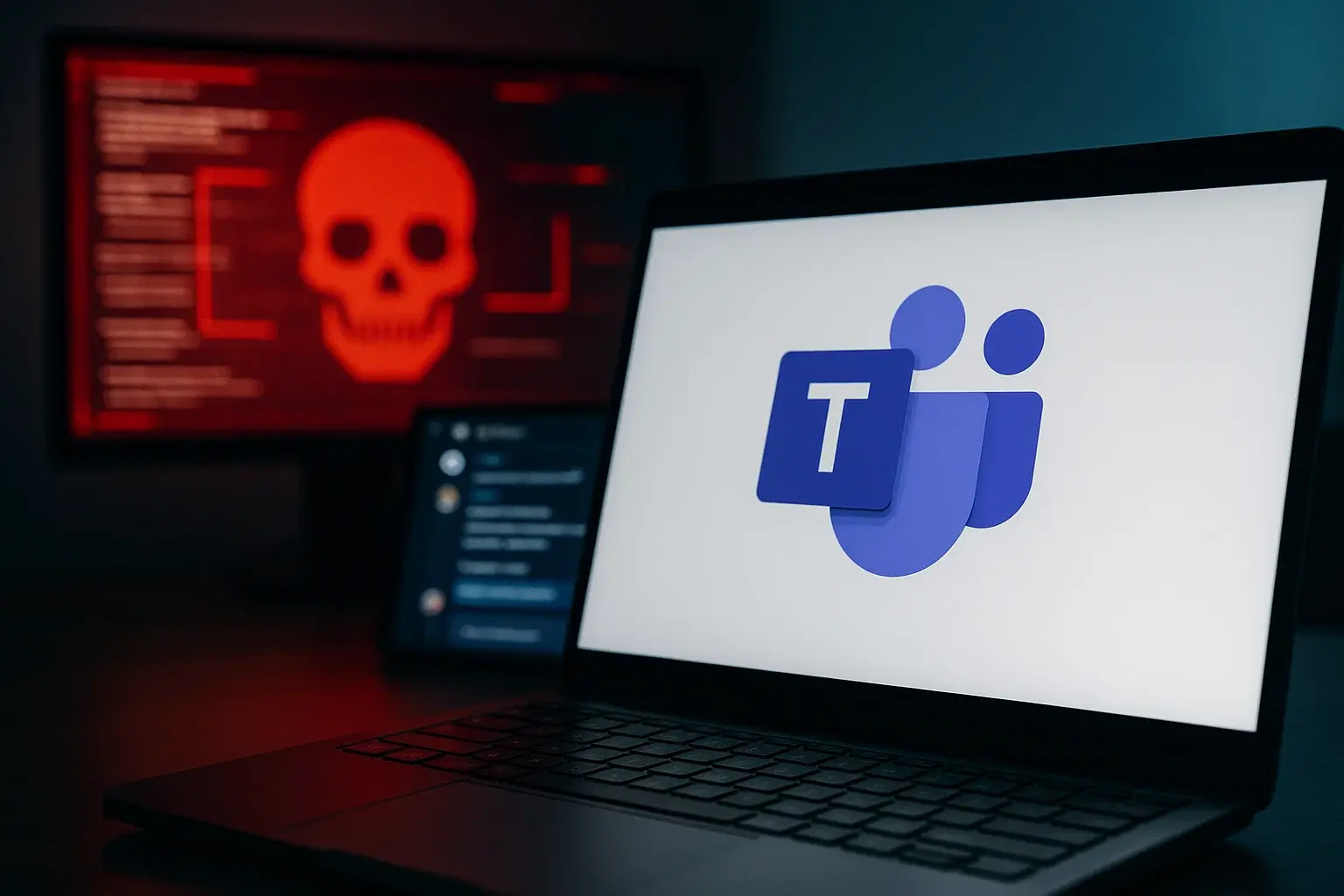In recent months, Microsoft Teams—the most widely used communication tool among businesses and organizations—has come under scrutiny for alarming reasons. Cybersecurity researchers discovered four critical vulnerabilities that allowed attackers to edit messages, manipulate notifications, and impersonate users undetected.
Cybersecurity company Check Point uncovered these flaws, which affected both internal users and external guests within Teams' collaborative spaces. In other words, the risk didn’t only come from outsiders—internal attackers could also exploit the bugs to deceive coworkers or extract sensitive information.
Four Vulnerabilities, One Root Problem: Digital Trust
According to Check Point’s report, these flaws allowed attackers to manipulate conversations, change sender identities, and alter user notifications. In practice, this meant a hacker could make a message appear to come from a trusted executive or coworker—opening the door to phishing, credential theft, or data leaks.
And it went beyond text manipulation. Attackers could also:
- Change usernames in private chats by modifying the “title” of the conversation.
- Forge call and video call notifications to make it look like someone else was contacting the user.
- Edit messages without triggering the “Edited” tag, making tampering hard to detect.
Check Point warned that these vulnerabilities undermine the foundation of trust that collaborative tools rely on. If you can’t be sure who’s messaging you—or whether the message was altered—the workplace becomes fertile ground for deception.
Discovery Timeline and Patches
These vulnerabilities were discovered in March 2024, when Check Point responsibly disclosed them to Microsoft.
- In August 2024, Microsoft patched the first flaw, identified as CVE-2024-38197, rated medium severity (CVSS 6.5).
- In September 2024 and October 2025, further patches were released for the remaining issues.
The flaws primarily affected Microsoft Teams for iOS, though some were also present in the desktop and web versions.
Microsoft’s security bulletin explained that the bugs allowed attackers to modify the sender’s name in messages, potentially tricking recipients into handing over sensitive info or taking unsafe actions.
Read more: Fake Microsoft Teams Installers Distribute Oyster Malware
How the Attack Worked
Imagine receiving a Teams message that looks like it’s from your boss or someone from Finance. It contains a link to an “urgent” report or a request to confirm your details—and you open it without a second thought.
That’s exactly the kind of social engineering attack these flaws enabled. By spoofing the sender and altering the notification preview, messages looked legitimate—even showing the real photo and name of the impersonated contact.
Once the recipient clicked the link, they could be redirected to a fake site, prompted to install malware, or asked to enter their corporate credentials.
Check Point highlighted that the attack could be executed by external guests in a channel or malicious insiders. Either way, the outcome was the same: broken trust and potential data exposure.
Social Engineering in the Workplace
Beyond the technical vulnerability, this case underscores a human problem: how easily attackers exploit trust.
Oded Vanunu, Head of Products Vulnerabilities Research at Check Point, summarized it best:
“Attackers no longer need to break systems—they just need to bend trust. Organizations must protect what people believe, not just what systems process.”
This insight signals a broader shift: modern threats don’t just attack tech—they target perception. If a tool as ubiquitous as Teams can be manipulated, any message, call, or shared file could become a doorway to an attack.
The Scale of the Risk
Microsoft Teams is one of the most widely used business communication platforms, with over 320 million active users. From small companies to governments and global enterprises, its adoption is massive.
That makes it a top target for cybercriminals and state-sponsored actors. Microsoft itself has acknowledged that the app’s vast range of features—messaging, calls, screen sharing, storage, real-time collaboration—creates multiple intrusion points.
In recent years, documented campaigns have shown hackers posing as tech support to trick employees into granting remote access or downloading malicious files—all within Teams. With these vulnerabilities, such scams would have been even easier.
How to Stay Protected
At TecnetOne, we emphasize that the best defense against impersonation attacks combines technology, awareness, and constant verification.
If you use Microsoft Teams, follow these steps:
- Update the app on all devices—desktop and mobile—to ensure you’re protected.
- Verify sender identity—if a message asks you to do something unusual, confirm it through another channel.
- Avoid clicking on suspicious or shortened links, even if they seem to come from a known contact.
- Review guest and external user permissions in Teams channels. Only grant access when truly necessary.
- Enable multi-factor authentication (MFA) to protect against phishing and credential theft.
- Report unusual behavior in messages or notifications to your IT or security team immediately.
You might also be interested in: Microsoft Teams: April 2025 News and Updates
Beyond Patching: Rebuilding Trust
Even though Microsoft has fixed the vulnerabilities, the incident serves as a powerful reminder: digital trust is as fragile as any technical system.
Today’s attackers don’t break walls—they manipulate belief. That’s why cybersecurity must go beyond software to include education, awareness, and verification habits.
At TecnetOne, we believe the key lies in helping people recognize signs of manipulation, reinforce internal communication policies, and apply controls that minimize human error.
Conclusion: Seeing Is No Longer Believing
The Microsoft Teams flaws proved that—even in secure corporate environments—trust manipulation is the new battleground.
So next time you receive an urgent message, an unexpected link, or a suspiciously timed call, remember: what you see isn’t always what it is.

